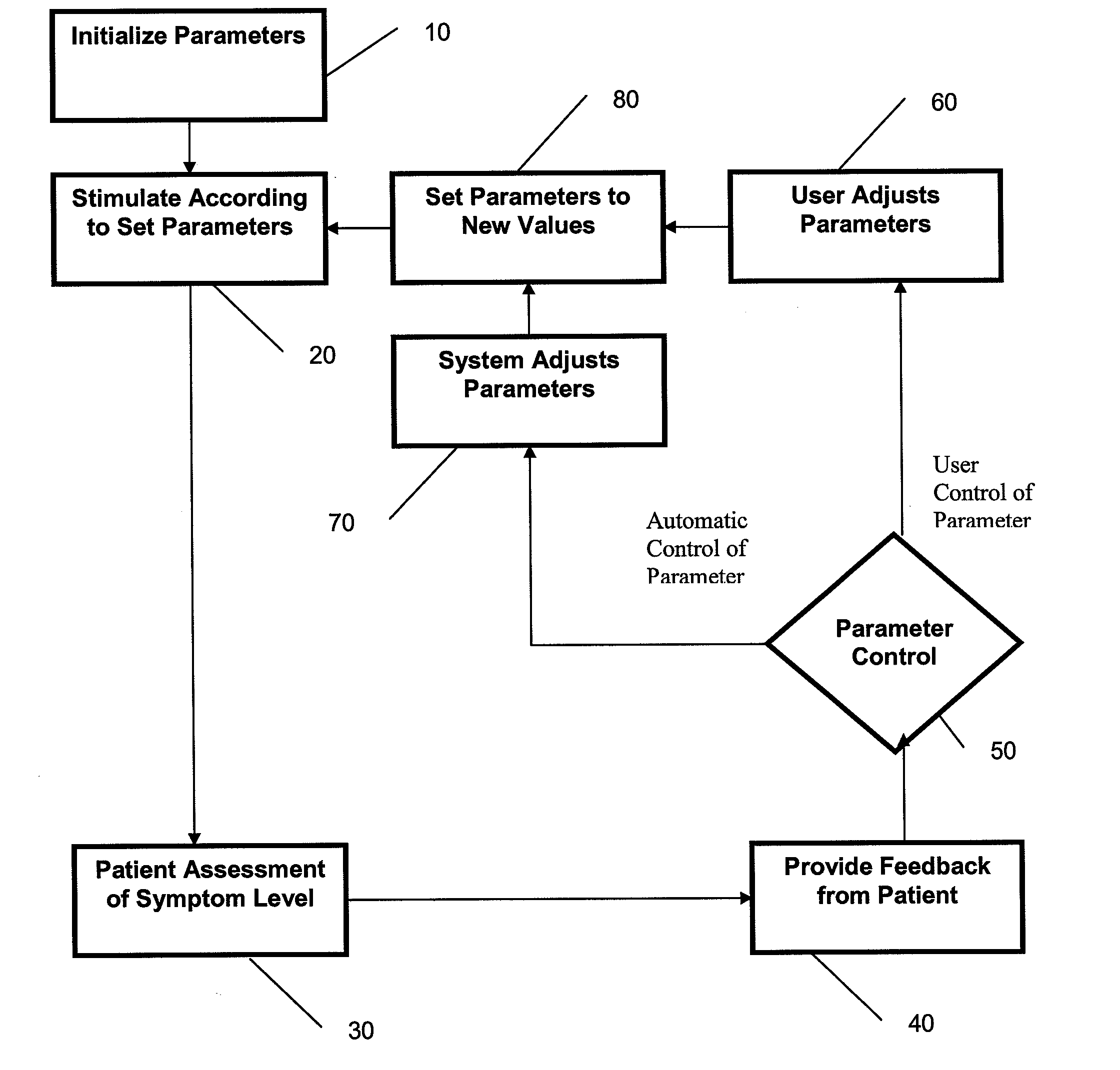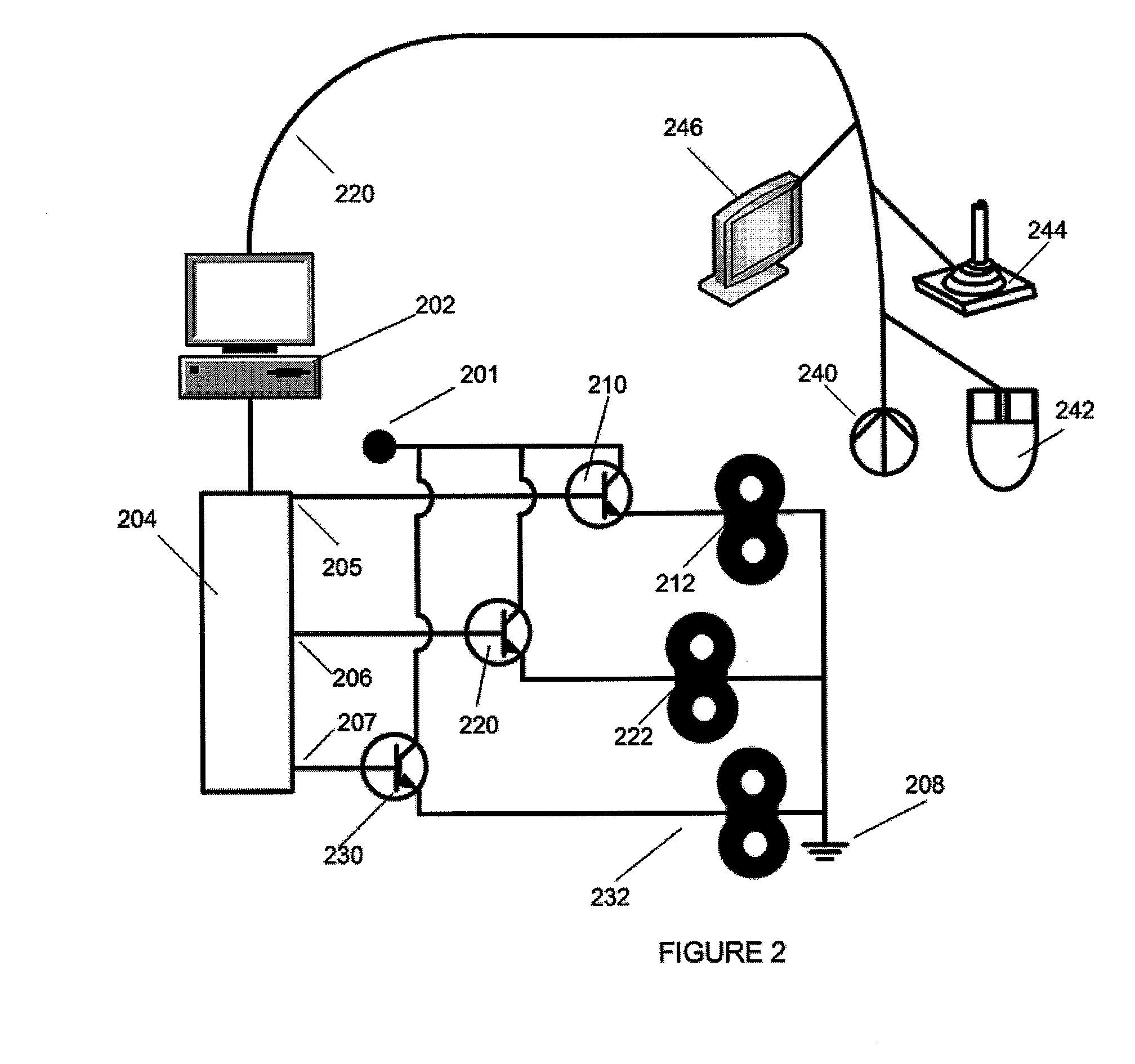Intra-session control of transcranial magnetic stimulation
a transcranial magnetic stimulation and transcranial magnetic stimulation technology, applied in magnetotherapy, magnetotherapy using coils/electromagnets, magnetotherapy, etc., can solve the problems of difficult to achieve practical deep brain tms, control does not allow functional feedback, and is less accurate and also less effectiv
- Summary
- Abstract
- Description
- Claims
- Application Information
AI Technical Summary
Benefits of technology
Problems solved by technology
Method used
Image
Examples
Embodiment Construction
[0033]In general, the devices and methods described herein allow patient feedback based on acute effects during a Transcranial Magnetic Stimulation (TMS) treatment to modify the TMS treatment. In particular, a TMS treatment method begins TMS treatment by applying an initial set of parameters for magnet orientation, power and frequency, and during the course of treatment one or more of these parameters is modified by patient feedback based on the acute experience of the patient during the TMS treatment. Systems for such intra-session control of TMS treatment may include one or more patient inputs, permitting feedback from the patient to modify the ongoing TMS treatment.
[0034]For example, described herein are methods including the steps of setting initial configuration parameters for TMS stimulation, stimulating the patient, and receiving direct feedback from the patient based on the acute response of the patient to the TMS treatment, and modifying the TMS treatment based on the feedb...
PUM
 Login to View More
Login to View More Abstract
Description
Claims
Application Information
 Login to View More
Login to View More - R&D
- Intellectual Property
- Life Sciences
- Materials
- Tech Scout
- Unparalleled Data Quality
- Higher Quality Content
- 60% Fewer Hallucinations
Browse by: Latest US Patents, China's latest patents, Technical Efficacy Thesaurus, Application Domain, Technology Topic, Popular Technical Reports.
© 2025 PatSnap. All rights reserved.Legal|Privacy policy|Modern Slavery Act Transparency Statement|Sitemap|About US| Contact US: help@patsnap.com



